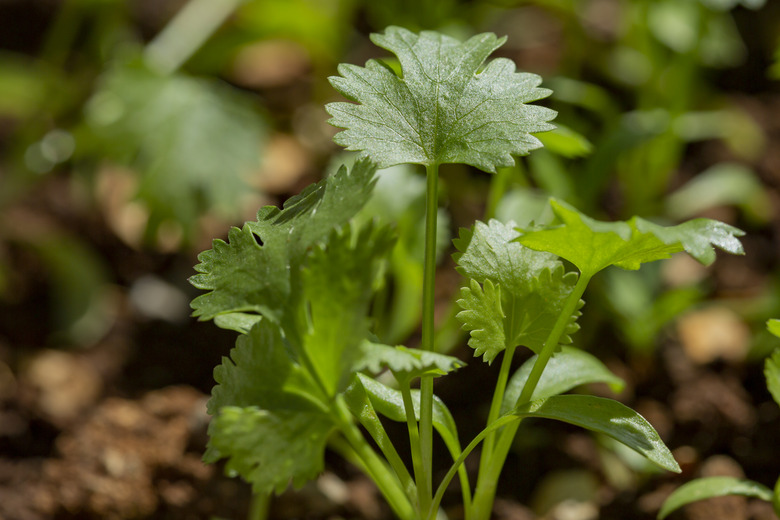4 Potential Causes Of Your Cilantro Plant's Yellow Leaves
We may receive a commission on purchases made from links.
Cilantro (Coriandrum sativum) is an annual herb that gardeners prize for its flavorful, aromatic leaves. If those leaves start to turn yellow, don't despair. Several common issues may be at the root of the problem when growing cilantro, and a combination of cultural controls can save your plant and boost the health, size, and flavor of your cilantro harvest.
1. Not Enough Sunlight
1. Not Enough Sunlight
Insufficient sunlight can lead to pale green or yellow leaves, stunted growth, and wilting. Cilantro, like most herbs, thrives best when it receives full sun, although it can get by on partial sun. Full sun is six hours of direct sunlight or more. Partial sun is four to six hours of direct sunlight.
Observe how the sunlight hits your garden, and note how long your herbs are exposed to direct sun. If necessary, cut back nearby shrubs, tree branches, and dense foliage that may be casting shade on the cilantro.
2. Lack of Consistent Watering
2. Lack of Consistent Watering
Drought stress causes cilantro leaves to curl inward and, if not fixed quickly, can lead to yellowing, wilting, and foliage loss. Cilantro should be kept evenly moist after it first germinates. Once the cilantro is a few inches tall, its root network is established and it needs less water. Water the annual herb deeply using enough water to moisten the soil to a depth of 6 to 8 inches, and allow the soil to dry out before watering the cilantro again. Always water cilantro in the morning, which allows the plant's leaves to dry out completely before nighttime.
3. Poor Soil Nutrients
3. Poor Soil Nutrients
Slow growth and yellow or pale leaves can be a symptom of poor soil nutrients. Fertilizer boosts plant growth and enhances the appearance and health of cilantro leaves, but too much fertilizer can cause the leaves to lose their characteristic flavor. Fertilize the herbs just once, approximately one or two months after planting the cilantro. When fertilizing, use 1/4 cup of 34-0-0 or 21-0-0 fertilizer for every 25 square feet of gardening space.
Don't allow the fertilizer to touch the cilantro's stems or leaves. This can cause nitrogen burns, which will make the leaf yellowing or wilting worse.
4. Damage From Pests
4. Damage From Pests
The strong-smelling essential oils in cilantro leaves repel most common garden pests. In rare cases, soft-bodied insects, such as mites and aphids, may occasionally feed on cilantro. This can cause plant stress and symptoms such as leaf loss, leaf yellowing, and stunted growth.
Shoot down your cilantro plant with a strong blast of water from a garden hose to dislodge and kill aphids, whiteflies, mites, and many other pests. If insect problems recur, make a safe, homemade insecticide to kill aphids and other pests. The steps to make the insecticide include:
- Pour a quart of water into a plastic spray bottle.
- Add 1 tablespoon of liquid dish detergent.
- Mix thoroughly.
- Mist the soap spray directly onto any insects you see on your cilantro.
- Repeat once a week until insect problems subside.
